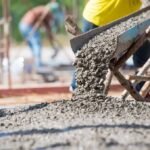Imagine being in a park, train station or shopping centre when someone suddenly collapses. In those critical moments, having access to a defibrillator can make a vast difference between life and death.
Defibrillators, especially in public spaces, are vital tools for saving lives during cardiac emergencies. They’re easy to use, widely influential and crucial for building safer communities.
What Are Defibrillators and Why Are They Needed?
Imagine someone collapsing in a crowded mall or park. Bystanders panic, and time is ticking. This is where a defibrillator can make all the difference.
A defibrillator, or Automated External Defibrillator (AED), is a gadget or device designed to restart the heart during a cardiac emergency. It sends an electric shock to reset the heart’s rhythm. Think of it as a reset button for the heart.
Public access defibrillators are a game-changer in emergencies. They’re designed to be easy to use, even for those with no medical background. When placed in public spaces, these devices can turn bystanders into lifesavers.
Understanding Sudden Cardiac Arrest (SCA)
Sudden Cardiac Arrest (SCA) happens when the heart suddenly stops beating. No warning, no time to prepare. People often mix it up with a heart attack, but they’re not the same. SCA is an electrical problem, while a heart attack is more like a plumbing issue.
And here’s the scary part: SCA doesn’t imply that it can happen to any particular person or age group, but it can happen to anyone, anytime and anywhere. In the UK, it is reported that more than 30,000 out-of-hospital cardiac arrests occur annually. Without immediate help, fewer than 1 in 10 survive.
Every minute without help reduces the chances of survival by 10%. After 10 minutes, the chances are almost zero. That’s where defibrillators step in. Defibrillators deliver a life-saving electric shock to restart the heart, giving the person a fighting chance. They bridge the gap until paramedics arrive.
Benefits of Having Defibrillators in Public Places
Why put defibrillators in public spots? Simple. It’s about saving lives and making communities safer.
Increasing Survival Rates
In places with public access defibrillators, survival rates from SCA can jump to 50-70%. That’s huge compared to areas without them, where survival hovers around 10%. Having a defibrillator nearby means help is available within minutes, even before an ambulance arrives.
Enhancing Community Preparedness and Safety
Defibrillators aren’t just about the device itself. They’re a symbol of community readiness.
Imagine a workplace, school or gym where staff and members know how to use an AED. It’s not just equipment; it’s empowerment. Training programmes that include AED use give people confidence. They teach how to spot SCA, use the device and perform CPR.
Online health and safety training makes this even more accessible. It breaks down complex topics into bite-sized lessons, allowing people to learn at their own pace and removing barriers like time and cost. This combination of training and technology transforms bystanders into heroes.
Strategic Placement of Defibrillators
Having defibrillators is one thing. Putting them in the right places is another.
High-Risk Locations
Some places are more likely to see cardiac emergencies. Gyms, for example, are hotspots because of intense physical activity. Airports, train stations and bus terminals see high foot traffic and long hours, making them critical locations, too. SCA shouldn’t be categorised to a certain age or fitness level. Even schools, sports venues and community centres are all places where defibrillators should be front and centre.
Guidelines for Accessibility
Placement matters. A defibrillator tucked away in a locked office isn’t helpful. Experts recommend that AEDs be visible, clearly marked and accessible within three minutes of any spot in a building. Signs should guide people, even in a rush.
Real-Life Success Stories
London’s Heathrow Airport has installed hundreds of AEDs and trained staff to use them, saving dozens of lives.
They’ve added a single defibrillator and trained volunteers. A patron collapsed one afternoon, and the AED helped save their life before paramedics arrived. These aren’t isolated incidents. They’re proof that strategic placement works.
Overcoming Challenges and Misconceptions
There are various challenges and hurdles. Cost, fear and misinformation are common roadblocks.
Addressing Cost and Maintenance
Defibrillators cost money, but they’re not as expensive as you might think. Entry-level models start at a few hundred pounds. Grants and community fundraising can cover costs, too.
Regular checks ensure the battery and pads are ready. Many AEDs even perform self-checks and signals when something needs attention. Maintaining an AED is like maintaining a fire extinguisher—simple but crucial.
Demystifying Fears and Legal Liabilities
Some people need help with using an AED correctly. The good news is that you can’t make things worse. AEDs guide users with step-by-step voice prompts. They only deliver a shock if it’s needed.
What about legal issues? Good Samaritan laws protect bystanders who try to help. As long as you act in good faith, you’re covered.
Empowering Communities
Hesitations often stem from a lack of knowledge, which is why raising awareness is so important. Initiatives like AED defibrillator training equip staff with the skills to use an AED confidently and effectively during cardiac emergencies.
These programmes teach not only how to operate an AED but also how to combine its use with CPR, significantly increasing survival rates for cardiac arrest victims. By building confidence and demonstrating how simple and safe AEDs are to use, they empower individuals to take action and ensure more lives can be saved in emergencies.
Concluding Remarks
Defibrillators in public places aren’t just helpful—they’re essential. They save lives, boost survival rates and create safer communities. With smart placement and proper training, they turn everyday spaces into life-saving hubs.
Challenges like cost and fear are manageable with education and awareness. Advocating for more AEDs and training programmes in schools, workplaces and public areas can make a real difference. By taking these steps, we can ensure defibrillators are as common as fire extinguishers—ready to save lives when every second counts.
For More Information Visit Timelymagazine








